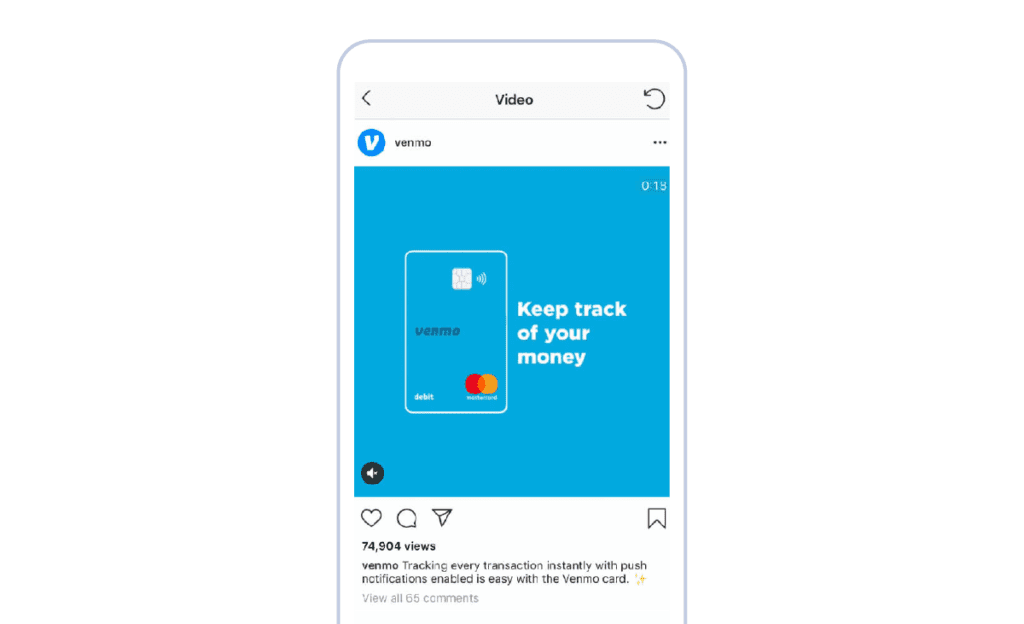A 2023 Step by Step Guide for Android App Marketing
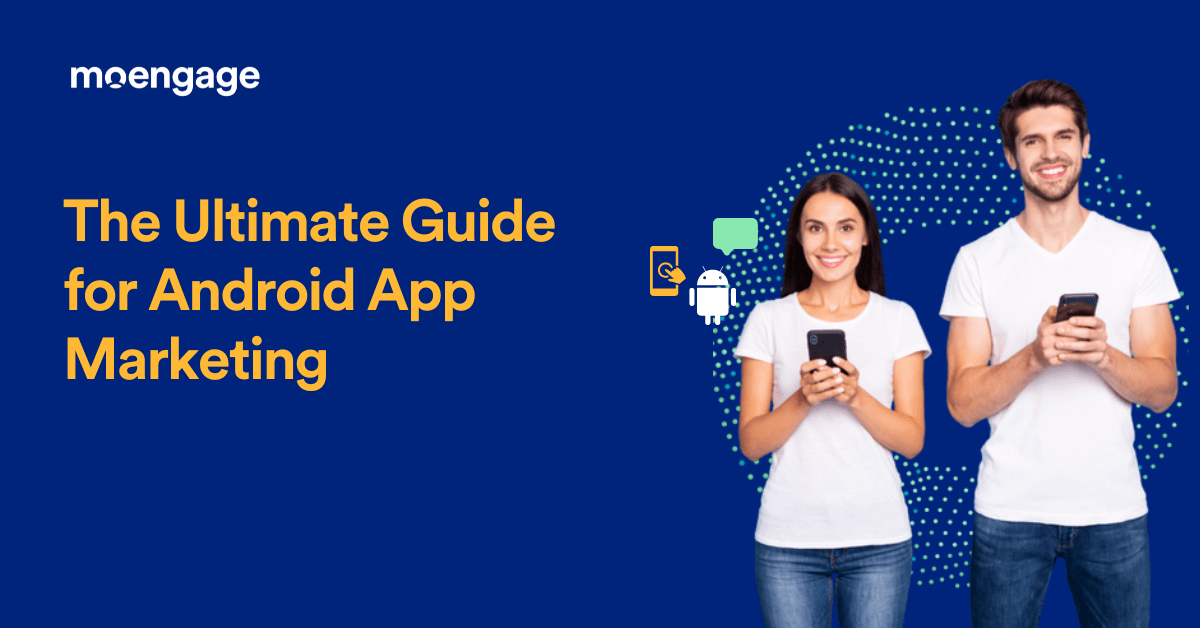
Apple may be OS royalty, but Android is the OS king of the masses. According to Statista, Android is the leading mobile operating system worldwide, with a 71.93% mobile market share.
Understanding how to market to this wide and varied target audience is worth the time and investment. If you have a killer Android app that can create a buzz in this vast market, we have all the right tricks up our sleeves to get your app into the right hands.
In this blog, we will decode everything you need to know about Android app marketing–from what it means to top strategies you can use across customer stages to get the maximum number of downloads and retain customers with every single download.
But first, let’s understand:
What is Android app marketing, anyway?
Google defines mobile app marketing as:
“An advertising medium that can complement a brand’s offline experience, drive E-commerce, or simply help connect a brand with its loyal customers.”
So Android app marketing would entail marketing your app for Android OS users across the various stages of the customer journey–from the moment they discover your app to becoming a loyal customer.
This brings us to the next important question:
What are the three stages of Android app marketing?
Glad you asked.
Similar to mobile app marketing, Android app marketing can be broken down into three stages–each with its own set of strategies and hacks that can maximize your ROI and keep customers engaged, all at the same time.
Stage 1 – Awareness or The Pre-Launch Stage
In application lingo, this stage refers to all the activities and tasks you would engage in before the launch of your app.
The Ultimate Goals of this Stage Include the Following:
- Building brand awareness and product visibility in alignment with the audience’s needs.
- Mapping out who your customers are and how they will discover your Android app.
- Defining a brand position that allows customers to connect with your product on a deeper level.
Steps to Take During this Stage
1. Do your market research to understand who your ideal customer is. You can go through influential blogs, social media channels, community groups, forums, and websites your audience routinely visits.
2. Once you’ve gathered the customer data, create an in-depth and accurate customer persona. Make sure to include customer demographics, background, challenges and pain points, mobile preferences, interests, and unique identifiers. You should also understand if the audience prefers paying for apps or making in-app purchases. Here’s an example of a customer persona for a mobile app:

|
| Pro Tip: Remember that you can always segment your audience further and chart a unique and customized customer journey based on their needs and requirements for every persona segmented. |
3. Identify the top 5 active players in your specific app category and do a comprehensive competitive analysis.
(i) You can include the following factors when doing the analysis:
- Current price strategy
- Monetization model
- App store ranking
- User experience (UX) pros and cons
- Notable reviews
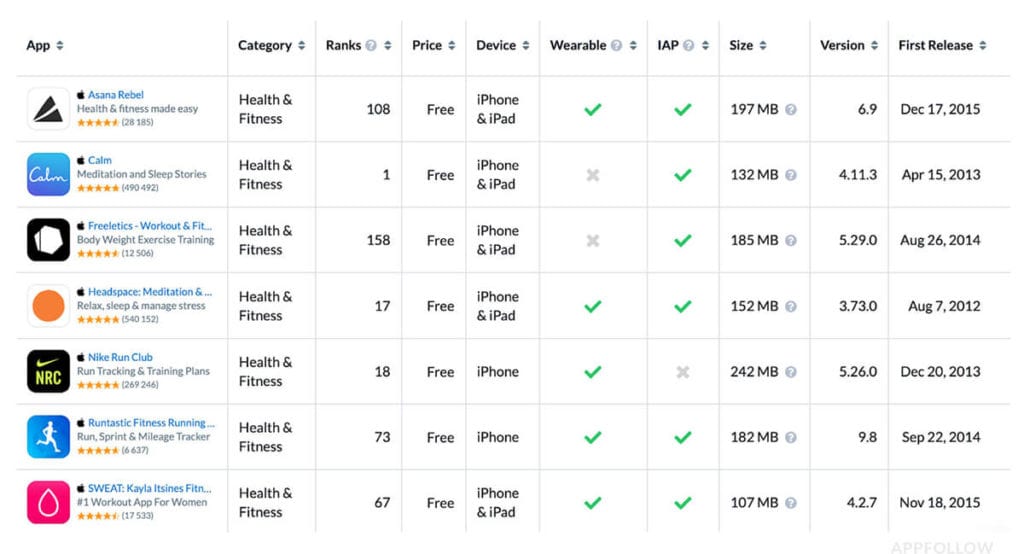
|
(ii) You can use ASO tools such as App Annie, SensorTower, or App-Mind to understand who your competitors are, what kind of advanced features they are requesting, and which are the best apps in your chosen category. Create a competitive matrix to see how your app compares for the best results.
4. Before the app development process, consider whether your app addresses your customer’s key pain point(s) and what will make it stand out against the competitors.
| Pro Tip: Make sure your app’s name is unique and uses rich keywords (if possible). Also, focus on creating an eye-catching app icon to reel the viewer in. |
5. Figure out a launch date that factors in critical elements such as the app’s review process, unpredictable delays/setbacks, contingency plans, and other events that may coincide with your app’s launch.
Top Strategies to Supercharge the “Awareness” Stage
1. Before you launch your product, get a thorough understanding of the following focus areas:
- Brand messaging and positioning
- The tone and style of your in-app content
- List of helpful functionality and app features
- Platform choice of customers
- Monetization strategy
2. Extensively focus on your brand’s intrinsic values and purpose (and not just product features), as Starbucks demonstrates below:

|
3. Define your brand positioning in such a way that your customers can connect with your customer’s product on a deeper level, as Airbnb demonstrates below through its “Home, experiences, and places” tagline.
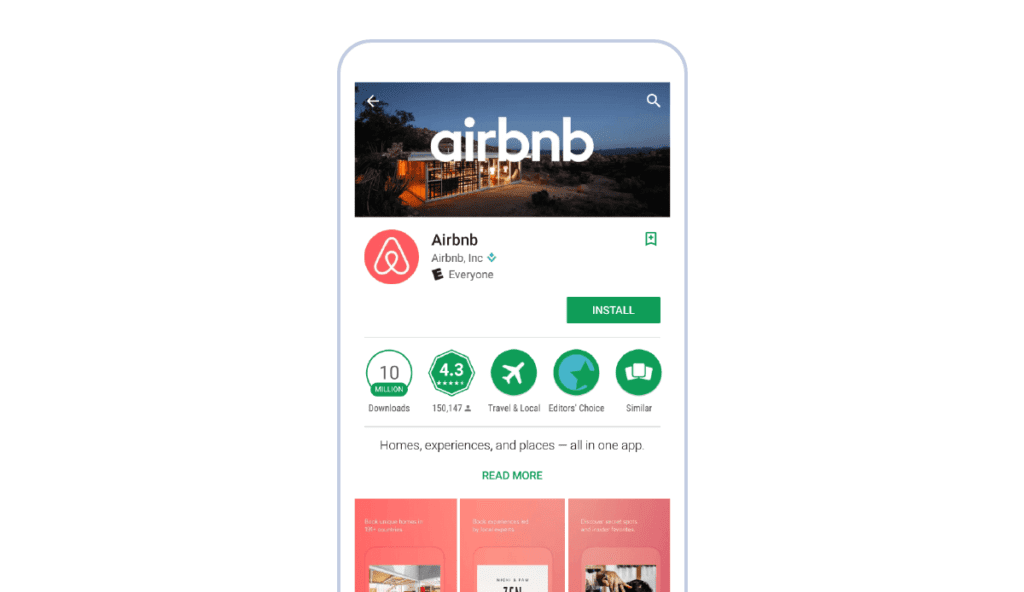
|
4. Build a website or landing page containing a teaser video of your product, snippets about your app UI, and describes its unique features.

Here’s another landing page example by Tapster, which takes landing page marketing one step further by encouraging customers to get early access to their app and get a chance to win $100:

|
This will help create hype around the product. You can repurpose the content and use it across the app store, social media platforms, and paid ads. Plus, you can use the website to drive SEO and collect customer emails, which can further be used in your content marketing campaign to inform customers about product launches, etc.

|
5. Engage in outreach initiatives by partnering with influencers, publications, app editors, and bloggers to get backlinks and encourage the display of honest reviews.

Example of App Influencer Marketing |

As a thumb rule, always keep your pitch concise and include a link to your press kit (which should consist of press releases, pictures, bio of the founders, screenshots of the app, logo, etc.) or landing page so that the reviewers can easily find all the information they will need.
6. Build a foolproof social media campaign to create a buzz around the app launch. Think about the platforms you will use depending on your audience–from Facebook and Instagram to Twitter and LinkedIn; there are many options.

|
| Pro Tip: Don’t forget to market on other unique channels such as Pinterest, Reddit, Quora, Tumblr, and Tech Podcasts on Spotify–if your audience actively uses these platforms: |

|
7. Make sure to include a CTA across your social media posts (such as “Click here,” “Download now,” “Install now,” “Visit website,” etc.) and create a dedicated hashtag to use across all the posts.

|
8. Besides talking about your Android app, drive engaging and entertaining content on your social media pages, as this can build a thriving community of like-minded customers.
9. Create a content marketing strategy.
- As a best practice, consider creating thought-leadership, informative blogs months before the launch. Why? This can help build your brand as an authority in the space and boost customer engagement immediately.
- To start with, blog about your app’s features and make sure to include screenshots and videos, and make it as visual as possible, as Vine demonstrates below:

|
- You can also include ebooks, white papers, reports, infographics, videos, case studies, quizzes, polls, etc., in your content marketing strategy.
| Pro Tip: Align your content marketing strategy with your social media strategy to make the most of the resources and assets used, and deliver coherent messaging across online and offline platforms. |
10. Apply for established and credible app awards such as BMA to get added exposure, authority, and downloads.
Let’s look at the next stage of the Android app marketing process.
Stage 2 – Acquisition
The second stage is refining your marketing strategy to see what’s sticking (and not).
The Ultimate Goals of this Stage Include the following:
- Getting as many downloads as you can within the first week of the launch
- Ensuring that your app ranks higher in the Google Play store search results organically
- Understanding the source of the customer app downloads so that you can focus on the revenue-generating channels and improve others
Steps to Take During this Stage
1. Engage in paid advertising by rolling out ads on social platforms (think: Facebook mobile app ads, Twitter app cards, etc.) and use Google Search ads to your advantage.

|
2. Engage in app store optimization to rank higher in search results and convert faster. Make sure to choose the correct category with less competition and greater chances for you to climb up the search rankings. You can also run app store ads to ensure top-of-mind recall:
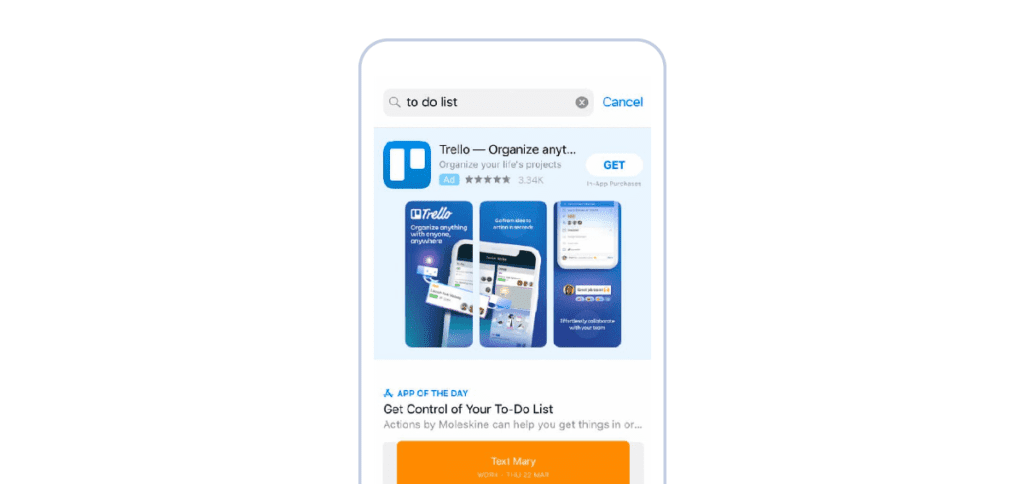
Image Source |
3. Pitch creatively to the Google Playstore’s team and get featured by professionals to boost visibility and downloads.
Top Strategies to Supercharge the “Acquisition” Stage
Some best practices to embrace include:
1. Using a catchy and actionable title with the relevant long-tail keywords as Calm demonstrates below:

|
2. Choose keywords for relevancy, search volume, and competition level. Also, use ones that can accurately describe your app’s main functional area and use the more humane long-tail keywords. Finally, you should also place the keywords strategically in your description and listing and ensure that the content is crisp.

|
3. You can also include positive reviews to build customer trust and confidence.
| Pro Tip: Make sure to resolve the negative reviews politely and promptly. |
4. Highlight your app’s features and benefits and showcase actual screenshots and short videos about how to use the app, as Adidas and Venmo do. These will help customers to convert faster.

|
5. Ensure that your app is localized for different countries and offers multi-lingual support to reach a more global audience.
Stage 3 – Retention
You may have gotten the maximum number of downloads in the first week. But your work is far from done. It is equally important to keep your customers engaged and encourage them to keep using the app–both of which are the primary goals of the final Retention stage.
The Ultimate Goal of this Stage Includes:
- Creating a plan of action for retaining your new customers and transforming them into lifelong customers
Steps to Take During this Stage:
1. Use in-app messages to communicate with customers within 28 days of downloading the app–an effort that can boost customer retention from 61% to 74%. Talk about how your app aligns with their needs and makes their life easier. Other talking points can be centered around warnings about app issues, version upgrades, new feature rollouts, upcoming deals, and so on.

|
2. Track your power customers based on how they use your app and gather real-time feedback on what they like and do not like about the app.
| Bonus Material: Here’s a helpful video on maximizing mobile marketing ROI with data. |
Top Strategies to Supercharge the “Retention” Stage
1. Make sure to segment your audience when sending in-app messages so that they receive personalized and contextual content.
2. Use push notifications to boost customer engagement and outreach, as Gaana did in this case study, to drive app engagement.
 |
| Bonus Material: Take this quiz on the common mistakes that could negatively impact your push notification delivery. |
3. Incentivize the app use at every step possible by including mobile-specific rewards, access to customized content, in-app contests, app-only coupons, special promotions, etc.
- Here are some tried-and-tested ways to boost app usage, as per Google:

|
- You can also drive downloads by incentivizing the app install process.
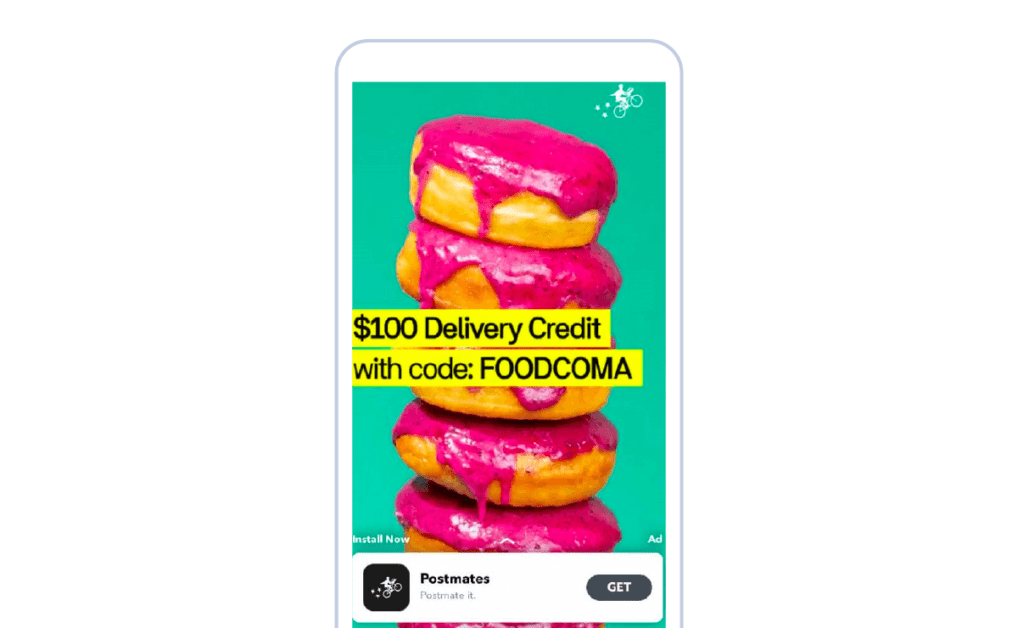 |
Finally, let’s look at some Android app marketing best practices that have stood the test of time and continue to provide 360-degree benefits.
Top-6 Android App Marketing Best Practices to Embrace
1. Encourage highly engaged, influential customers to provide authentic and honest feedback.

|
You can use a strategically placed pop-up ad, as Baby Center demonstrates below:
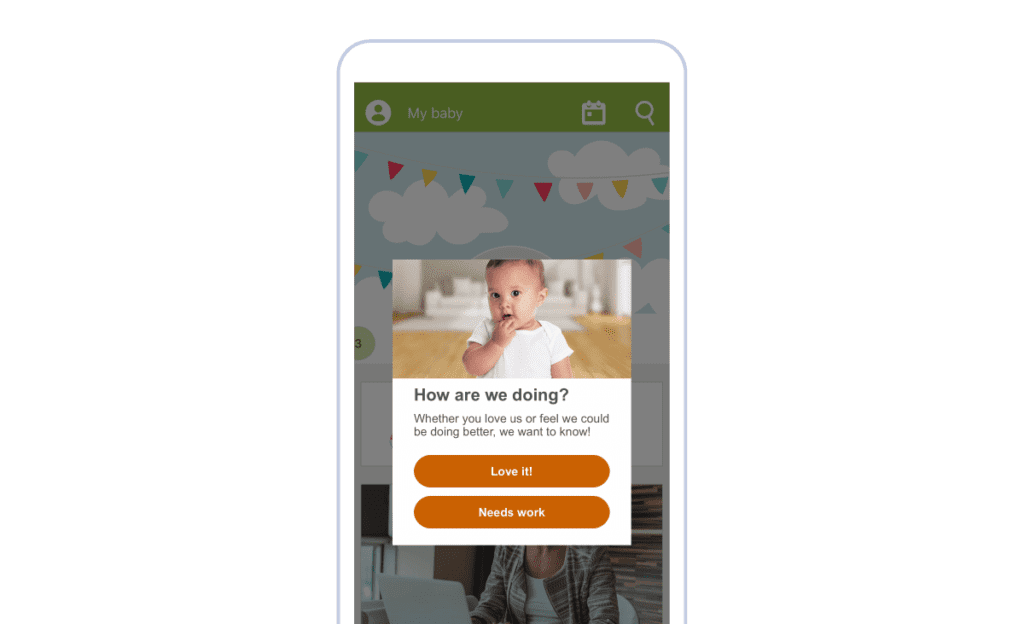
|
2. If you want to increase the volume of quality organic installs, engage in a “burst campaign,”–which involves aggressively promoting your app through paid media exposure over a short period – usually between 24 and 72 hours.
3. Go the Dropbox way and draft a killer referral campaign that offers customers rewards/benefits in exchange for every referral they bring in. In the beginning, provide your app for free to boost customer engagement.
4. Analyze your app’s performance, traffic, and downloads by defining key KPIs such as daily active customers (DAUs), churn rate, time in-app, session interval and length, and cost per acquisition.
5. Don’t over-promise or falsely advertise your app’s capabilities, and ensure that your messaging remains consistent.
6. Ensure that your app’s user interface is original and unique. Plus, make sure your app is discoverable across search engines–a significant advantage according to Google, search ads, and channels such as YouTube. You can set up a dedicated YouTube channel to effectively publicize your app.

|
Wrapping Up
The ultimate goal of your Android app marketing campaign should be to encourage repeat engagement and, more importantly, convert your app customers into lifelong, confessed brand advocates. This is where knowing how to market your Android app correctly can pay off huge dividends.
Remember that your marketing strategy should begin long before you launch the app. So follow these hacks and strategies mentioned above to bring to life your app–one that is well-marketed, user-friendly, and “sticky” in the truest sense of the terms.











